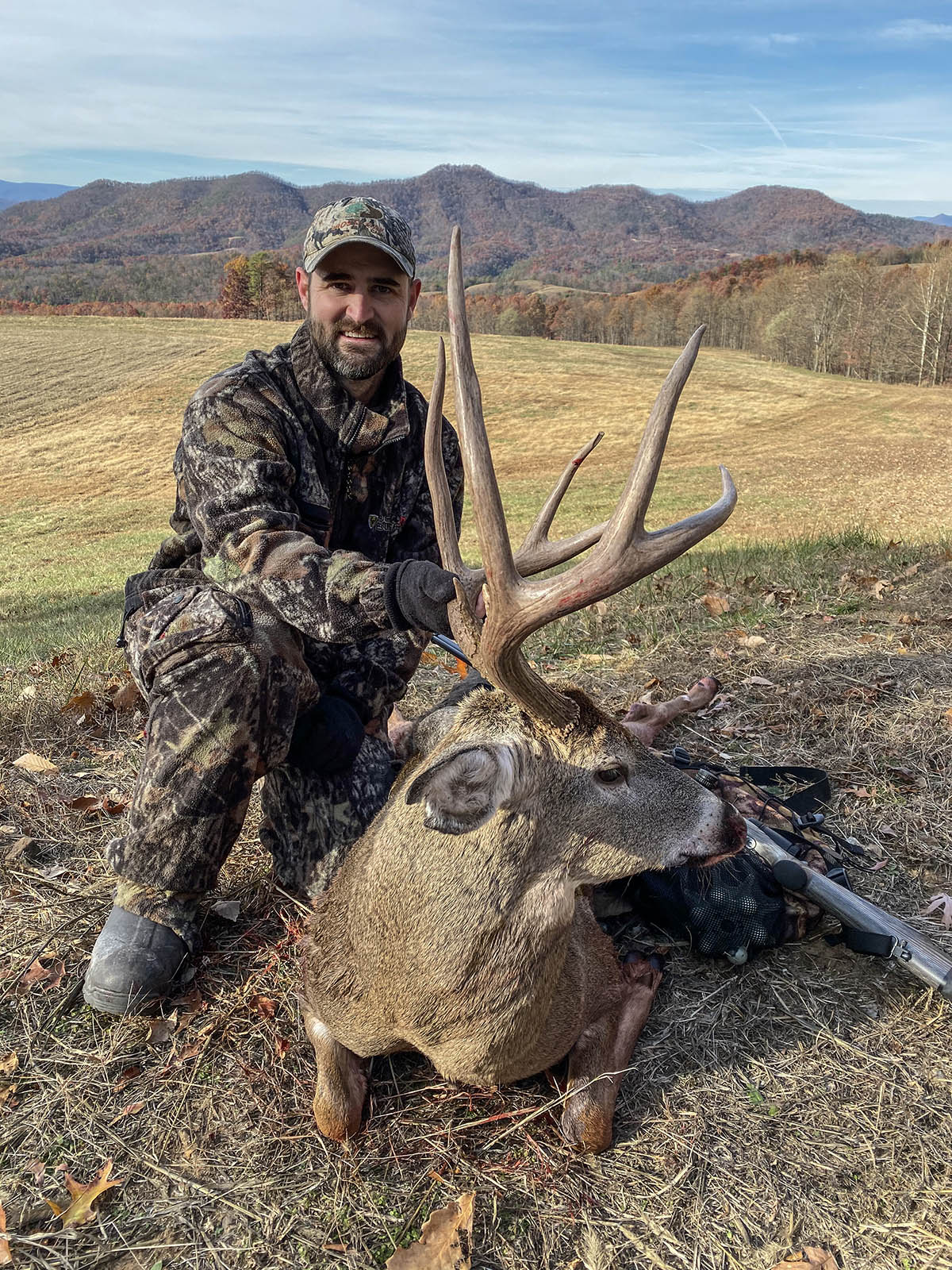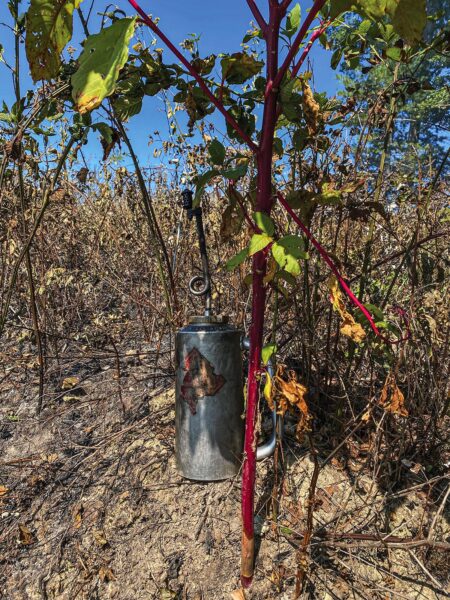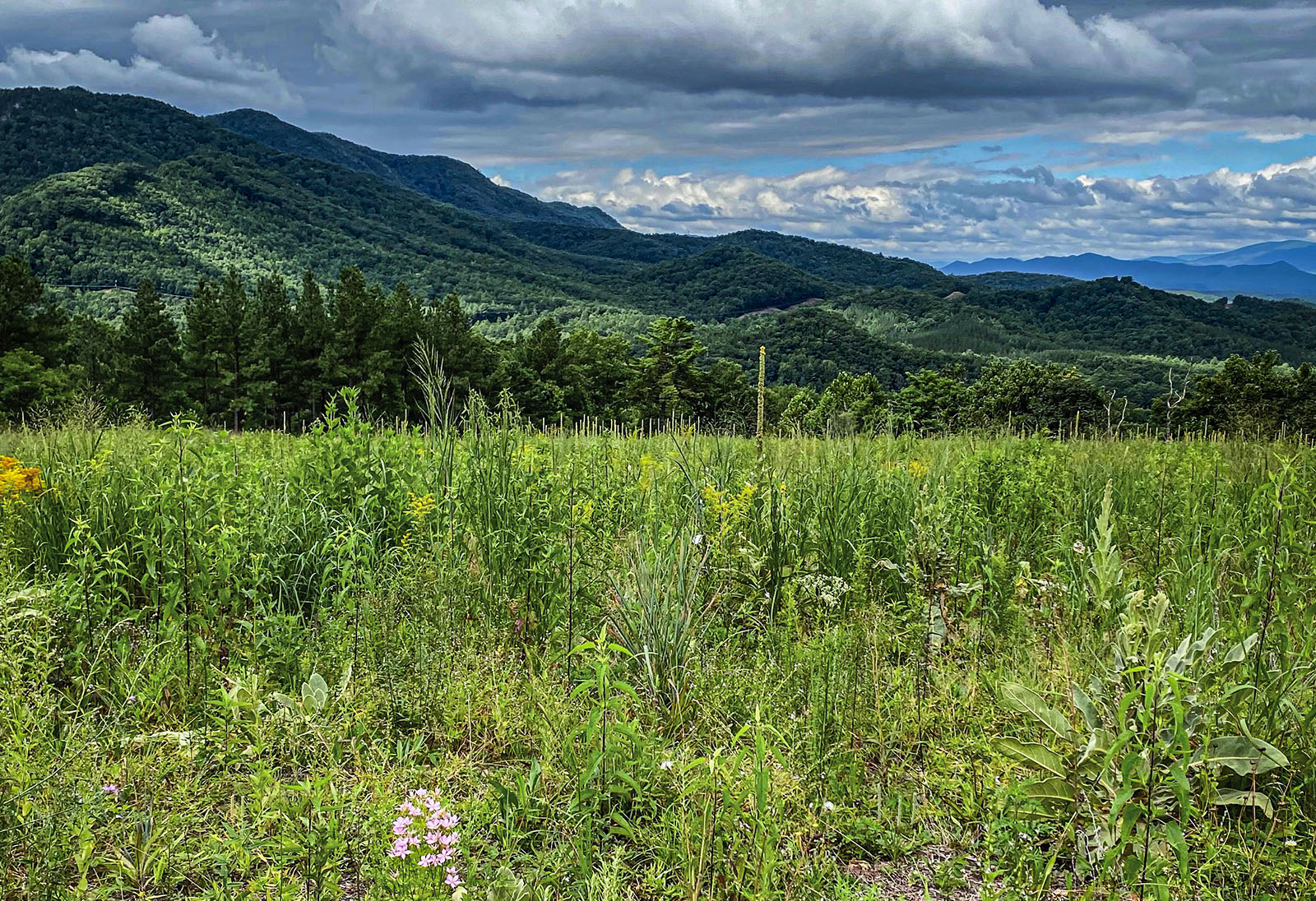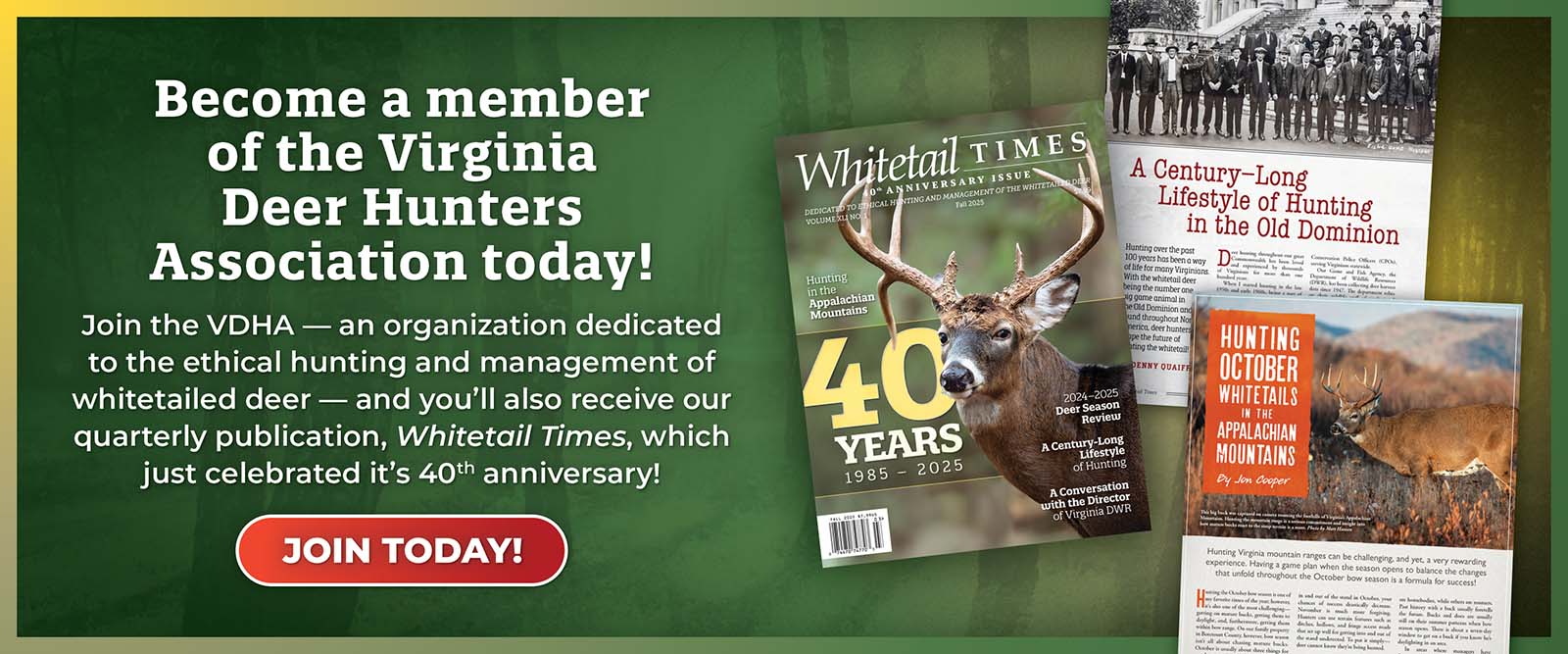One habitat management technique stands above the rest. When you couple two techniques, however, it has a multiplier effect for wildlife.
By Jon Cooper for Whitetail Times
Prescribed fire is becoming an increasingly crucial and highly beneficial management technique that we continue to implement on our family’s 10,000-acre recreational property located west of the Blue Ridge in Botetourt County, in a poor-soiled, heavily-forested region. Despite the limiting factor of acidic soils—and the $300-plus per-acre expense to establish a quality food plot—we’ve been successful in holding, growing, and harvesting many mature bucks. Our goal has been to couple fire with canopy disturbance, which research has shown produces around eight times the amount of deer forage verses a mature, unmanaged forest.
The problem that we had to solve was clear: how can we create high-quality forage for our deer herd without the vast expense of many acres of food plots? How can we better maximize the landscape’s nutritional carrying capacity for deer and turkey? We can’t manage our herd on food plots alone.
Our only answer was to disturb the tree canopy by harvesting timber and allowing more sunlight to reach the ground. That was step one. Continually disturbing these stands to ensure it remains in reach of deer to create cover and forage was step two. Selfishly, I want hundreds of acres of lush vegetation to hit our landscape at spring green-up. After all, that’s when bucks are growing antlers and does are in late gestation. It’s also months before any warm-season food plot starts producing forage.
This is an article about prescribed fire—why and how we use it and the goals it accomplishes for deer.
More than any other management practice, prescribed fire can improve habitat in old fields, open areas, and thinned upland hardwoods. Fire improves seed bank production (the first couple of inches in the soil), forage, and cover all at the same time. Fire removes ground thatch and leaf litter and stimulates the seed bank, and the vegetation responds during spring green-up, depending on how much sunlight is hitting the ground.
Is fire intimidating? It should be. However, once a manager has received hands-on experience, prescribed fire becomes attainable. Just the knowledge and confidence a person gets from seeing fire respond to different environmental conditions is educational. I’m a Certified Burn Manager in Virginia and encourage every manager and landowner to take the course provided through the Virginia Department of Forestry. It’s also important to follow a burn plan by a trained professional.
When do we burn?
Most prescribed fires occur in late winter, from February through mid-April. Rapid smoke dispersal and lower relative humidity are common environmental conditions, especially after a cold front passes through the area. That’s coupled with the fact that trees have no leaves, and the ground receives full solar energy. The temperature is usually less than 60 degrees, too.
Growing-season burns are also conducted, and most stands are burned on a cool-season, warm-season rotation. Cool-season burns top-kill woody saplings, and the seed bank tends to promote grasses in response. Whereas a growing-season fire conducted in late July through early October can reduce the amount of woody encroachment (terminates the tree and root system) and tends to promote more forbs. Where available, forbs represent the primary diet of a deer during the antler-growing season.
What areas do we burn?
Our goal is to create lots of diversity on the landscape in different five-to-30-acre stands. So, we have a mix of closed canopy forest, thinned hardwood stands anywhere from 40 to 60 percent or greater canopy reduction, regenerating hardwood clearcuts, old fields, and open areas. The areas we don’t burn are mainly closed canopy forests and appointed stands that are silvicultural harvests.
In our management plan, we have designated some clearcuts as bedding areas. We burn those on a five- to seven-year interval during the cool season. We want a dense, woody structure that holds a lot of deer. A clearcut becomes less applicable to deer once it reaches eight years old. It’s now a young forest and past time for disturbance. The cool-season fire resets the hardwood structure by top-killing the trees. The root systems remain alive, but the tree from the ground level up is killed. The root system will respond with stump sprouts, which are high-quality forage, and will eventually grow back into the desired woody, gnarly structure for a bedding area.

The author harvested this mature buck during the 2017 season. Management works, even on a landscape with many limiting factors. The author and his family work year-round on improving their ground to promote better habitat in order to increase the nutritional carrying capacity for deer.
Some clearcuts and thinned hardwood stands are maintained by fire to produce a combination of food and cover. These units are burned on a three-to-five year interval and rotated between cool-season and warm-season burns.
Old-fields and open areas are usually burned on a two-to-four-year interval, rotating between cool-season and growing-season to maintain vegetation type and structure. The fire interval will continue to reset the old-field from becoming a thicket of trees. It’s important to terminate cool-season perennial grasses (tall fescue and orchard grass) in old fields prior to burning them in order to get a desired vegetation response.
What tools are used?
At least one drip torch is usually necessary. Two drip torches help expedite the burn. Backpack blowers are crucial tools for us. They remove leaf litter along fire breaks and are often used during the fire. Radios are imperative, as mangers have to know what’s going on at all times and if any spotting (fire jumping the break) happens. Fire rakes and chainsaws are often used. We also have two ATVs with water tanks at all times. A backpack sprayer is utilized for areas inside the burn unit not accessible by an ATV. Many other tools can be used, but these are a few priorities.

The author’s drip torch was tucked behind one of the best forbs on the landscape: pokeweed. University of Tennessee research has proven that pokeweed contains 32% crude protein, is highly selected by deer, provides outstanding brooding cover, and has high seed value for birds.
What are the weather parameters for a safe and successful burn?
Weather is the most important factor when deciding whether or not to perform a prescribed fire. We usually adhere by the 60:40 rule when burning in late winter. We generally burn when the temperature is at or below 60 degrees and the relative humidity is 40 percent or higher. Relative humidity and wind speed are two of the most important fire weather parameters. If the relative humidity is 30 percent or lower, spot fires can happen easily, and fire can sometimes climb trees. If the relative humidity is closer to 40 percent, there’s less chance for trouble. Keeping the 60:40 rule in mind will make burning easier and safer.
The best days to burn typically occur in late winter a few days after a cold front when rain has passed through the area. Persistent winds follow (5 to 15 miles per hour), along with cool temperatures (less than 60 degrees) and lower relative humidity (30 to 50 percent).
Growing season burns are different. For example, if burns are conducted in a thinned hardwoods stand, it may take a relative humidity in the 30s and surface winds of 10-12 miles per hour to help advance the fire, consume the fuel, and accomplish goals. If clearcuts or old fields are being burned, relative humidity doesn’t have to be that low and wind speeds not as high. As long as there is sufficient sunlight and dry fuel in a stand, growing season burns are successful.
The National Weather Service is an excellent source of fire weather information.
What’s the anatomy of a fire?
In late July of 2021, we conducted a growing season fire on a six-acre clearcut that was previously planted in loblolly pines. It’s a west-facing slope, with the elevation rising up the ridge. We took a small dozer around the burn unit to ensure we had sufficient fire breaks. (If burning woods, we can use a backpack blower to clear leaf litter to make fire breaks. If burning old fields, we take a heavy offset disk around the field to ensure fire breaks of bare dirt.)
The forecasted west wind was 5 to 10 miles per hour and the relative humidity was around 35 to 40 percent. Fuel inside the burn unit was dry due to the lack of moisture during the month. Our goal was to terminate some of the encroaching woody saplings, reduce the amount of broomsedge bluestem grasses, and reset succession to promote more forbs for deer foraging, bedding, and brooding cover.
We started by lighting the test fire at point A. Once we observed normal conditions on the test fire, one person took a drip torch and walked from point A to point B. We then allowed the fire to back down from a higher elevation to a lower elevation. Once we had sufficient black line (all fuel consumed) about 35 to 40 yards inside the burn unit, one person took a drip torch from point C to point D. This created a strip heading fire that burned hot and quickly consumed the vegetation to the existing black line above. (Please note that the strip heading fire technique isn’t recommended for burning a thinned hardwood stand because the hot fire can kill mature trees. In this case, we wanted to terminate the hardwoods inside the burn unit). Next, a person took a drip torch from point E point F.
Deer are generalists and concentrate selectors, meaning they browse the most nutritious forage in a wide variety of vegetation types. Pictured below are forbs as a result of a prescribed fire performed in late April. Pokeweed (32 percent crude protein), partridge pea (29.6 percent CP), and common ragweed (17.8 percent CP) are all creating high-quality forage, as determined by Dr. Craig Harper’s research at the University of Tennessee. All three forbs, among several others, are highly preferred by deer and can allow bucks and does to express their full potential on native forage. Also, note that this is great brooding cover. The vertical structure acts as an umbrella canopy for turkey poults with added protection from avian predators. Turkeys can forage and move on bare dirt throughout the burn unit.

The picture shows a burn unit. Nearly all the trees were consumed, along with understory vegetation. A few days later, it rained, and the burn unit immediately started to green up and provided quality forage and cover until the first heavy frosts. The following spring, many forbs were already established, including common ragweed, wild lettuce, and partridge pea. Due to the timing of the burn, most of the trees were terminated.
The use of fire is transforming our landscape. We are seeing higher fawn recruitment and continuing to harvest good bucks as a result of creating more cover and quality forage. Now, a greater percentage of our acreage is useable space for whitetails.
I would encourage managers interested in using fire to start small. Start with a small old field where cool-season grasses have been terminated. I also encourage managers to boldly open the canopy and allow sunlight to reach the ground. Many wildlife species benefit from disturbance, especially deer.
Jon Cooper manages his family’s 10,000-acre recreational property in Botetourt County and has a passion for habitat management. Jon is a life member of the Virginia Deer Hunter’s Association. He serves on the Virginia Department of Wildlife Resources Board of Directors, along with being a director with the Appalachian Habitat Association.
©Virginia Deer Hunters Association. For attribution information and reprint rights, contact Denny Quaiff, Executive Director, VDHA.


